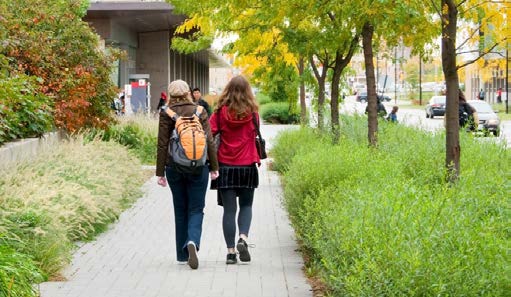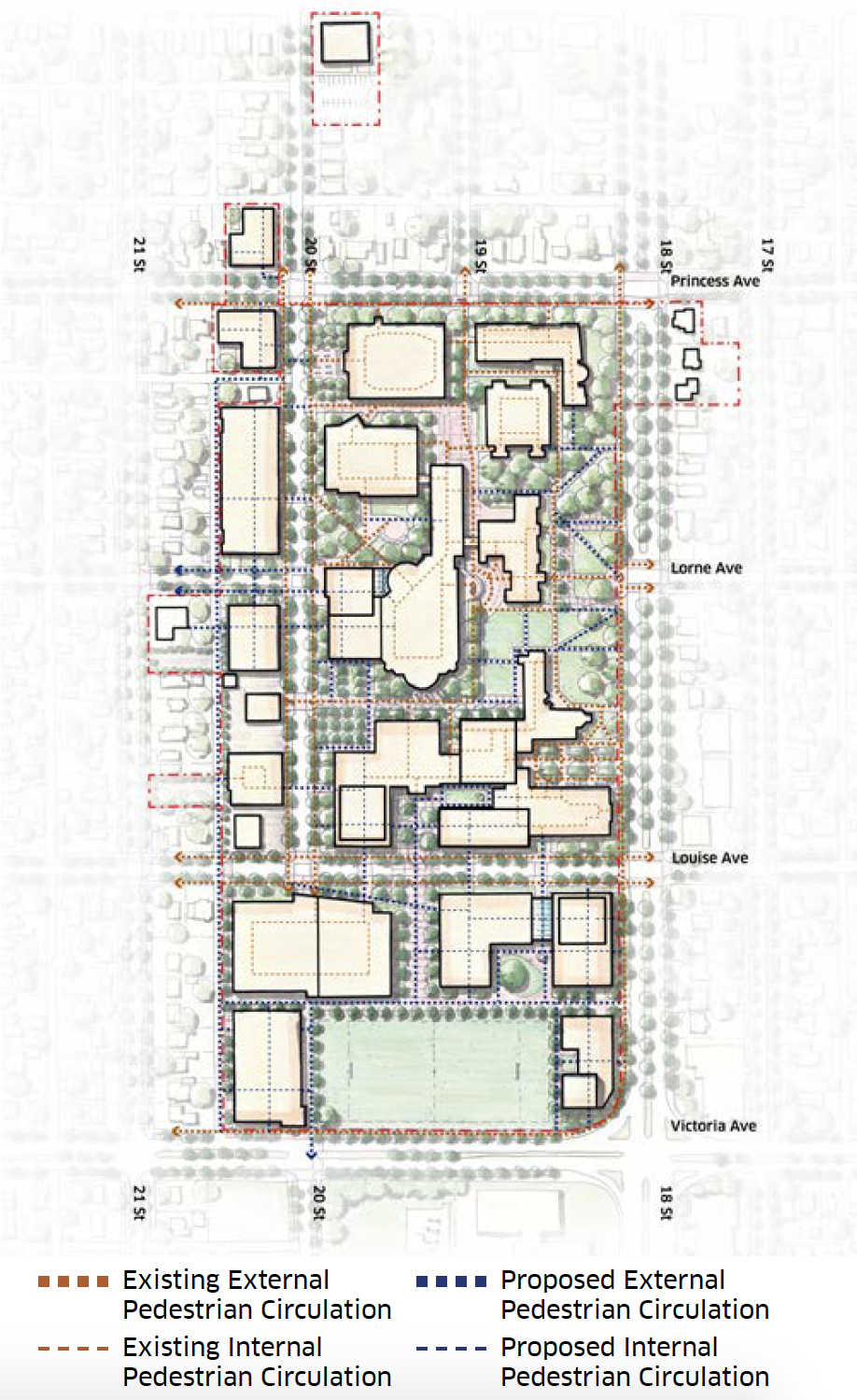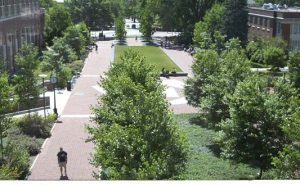Pedestrian Circulation

The Movement Framework reflects an extensive circulation network for pedestrian and cycling movement that is needed for a pedestrian-oriented environment that is designed primarily for the pedestrian. The majority of the Campus is a car-free zone, with the exception of some areas for pedestrian drop-off and the servicing of buildings.
As such, pedestrian circulation must be of highest priority when it comes to designing a vibrant and welcoming place that is accessible by all. This means that above all, pedestrian activity and the walking experience within the Campus is enhanced and improved for utilitarian, leisure, and recreational purposes. It is a means of fostering healthy lifestyles for both the University’s population as well as the surrounding community and for creating an environment that is continuously animated.
Policies:
- Pedestrian pathways should be designed to accommodate use and circulation of the Campus 24/7 and year round.
- A maintenance regime for winter snow removal must be established to enable ease of circulation through the Campus’ streets and pathways. Consider enhanced design features such as heated passageways within the plaza spaces.
- Expand the internal circulation network to connect to the external pathways and open spaces increase ease of pedestrian movement through the campus.
- All external pathways must also accommodate bicycle circulation.
- Locate and orient new buildings to provide short and direct distances between building entrances.
- All streets (including the road and sidewalks must be walkable in all seasons.
- Identify circulation routes through the Campus for cross-country skiing, snow shoeing, or long-distance running.


